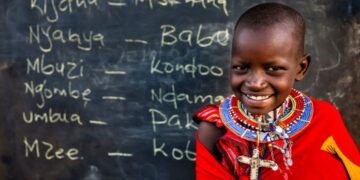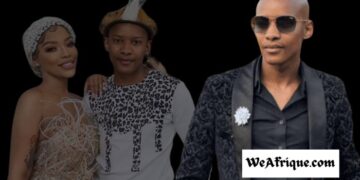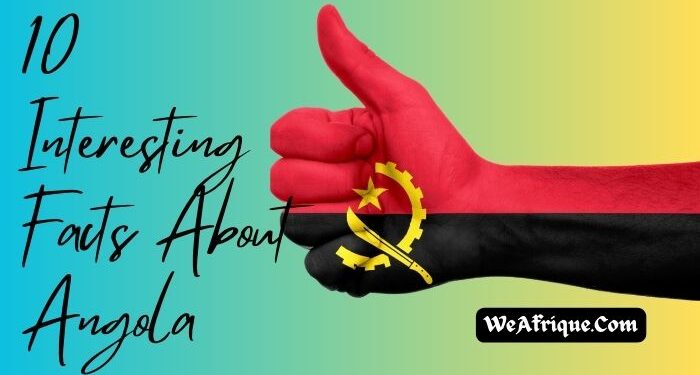Angola is the seventh-largest nation in Africa, endowed with natural resources such as copper, diamonds, and crude oil. After enduring a civil war for more than 20 years, beginning at the time of its independence, the nation is now regarded as one that is rapidly developing.
It derived its name from the title N’gola, which was held by the kings of Ndongo and Matamba. It is a vast country with a long coastline and central plateau. Angola is situated in southern Africa and borders Namibia, the Democratic Republic of the Congo, and Zambia.
With over 100 distinct ethnic groups and languages/dialects, Portuguese is the official language. Additionally, the country’s most spoken indigenous languages are Umbundu, Kimbundu, and Kikongo.
Here are Some Intriguing Facts About Angola
10. Angola is the 7th Largest Country in Africa and 23rd Largest Country in the World
Angola is the 7th largest country in Africa, with an area of 1,246,700 square kilometers and a border that is 4,837 kilometers long. The nation is divided into 18 provinces. It is situated on the Atlantic coast of Southern Africa, south of the equator, and is bordered by Namibia to the south, Zambia to the east, and the Democratic Republic of the Congo to the north.
9. The Country is The last Portuguese Colony to Gain Independence in Africa
Across the world, the Portuguese have colonized over 50 countries, including Angola. Of the five Portuguese colonies in Africa, Angola was the last to gain independence, on November 11, 1975.
Colonial rule in Angola began under Diogo Cao in 1483 and was established through diplomatic relations with the kingdom. Conflicts over the slave trade led to the Portuguese strengthening their position and expanding their territories. Colonial rule lasted for over 450 years, ending in 1975.
8. Diamonds and Oil Makes Up 75% of Angola’s Economy
Diamonds and oil have always been Angola’s most important economic assets. The conservative American think tank Heritage Foundation claims that Angola’s oil production has increased significantly in recent years. The oil industry is the main driver of the Angolan economy, and the country is thought to have proven crude oil reserves totaling 9 billion barrels.
The nation is also abundant in gold, copper, fossil fuels, forests, and diamonds. Peasant and plantation agriculture declined significantly during the Angolan Civil War, but following the war, the nation has been striving to reach its full potential. Despite a slow GDP growth rate and a rapidly growing population, the economy expanded by nearly 5% in 2020 and by 0.7% in 2021.
7. The Samba Dance Originated In Angola
The Samba dance is often associated with Brazil, but what most people don’t know is that it originated in Angola and is called “Semba.”
Semba means “the body of the man that comes in contact with the body of a woman at the level of the belly button.” In the Kimbundu language, Semba also shares the meaning of “Umbigada,” which describes a dance movement that involves contact between two bodies.
Semba became popular in the 1950s. One might wonder how it became affiliated with Brazil. Well, Brazil and Angola were under the same colonial rule and had a trans-Atlantic slave trade between them. The Brazilians adopted Semba from the Angolans.
6. The Giant Sable Antelope is Angola’s National Icon
Due to its characteristics, rarity, and unique status, the Giant Sable antelope, also known as the Royal Sable antelope, is referred to as “Kolo” or “Sumbakolo” and is considered to be part of Angolan biodiversity. The antelope is viewed as a symbol of heritage that represents all communities.
The sable was adopted as an emblem of colonial administration and was the first animal to obtain legal protection. After the country gained its independence, the animal was made to take its rightful place as the pride of the nation, regardless of the many ethnic groups, religious beliefs, or political views.
5. Angola Homes One of the Largest Falls by Volume in Africa
The Kalandula Waterfall, formerly known as Duque de Bragança, is one of the biggest waterfalls on the continent by volume and is often described as horseshoe-shaped. It is located in Calandula, Malanje Province, on the Lucala River. The fall has a height of 105 meters (344 feet) and 400 meters (1,300 feet).
4. Angola Has a High Rate of Polygamy Due to The Shortage of Men
Angolan law does not approve of polygamy. However, the country is known to have a high rate of polygamy due to a shortage of men. Sadly, this shortage was caused by the country’s civil war, which started in 1975 and ended in 2002, spanning 27 years.
It is reported that the war claimed the lives of many men and spared women and children.
3. Angola Used to be Called the Bread Basket of Southern Africa
Before gaining independence in 1975, Angola was the breadbasket of southern Africa and a significant exporter of bananas, coffee, and sisal. However, the country’s fertile countryside was destroyed and littered with landmines during the country’s three-decade civil war (1975–2002), forcing millions of people into the cities.
Currently, the nation is dependent on expensive food imports, primarily from Portugal and South Africa, even though more than 90% of farming is done on a family and subsistence basis. Many small-scale farmers in Angola are enslaved by poverty.
See Also: Poorest Countries in Africa 2022: Top 10
2. Education is Compulsory and Free For Six Years
Since the end of the civil war, Angola has made efforts to reform its educational sector, empowering and improving literacy rates in recent years. Despite the fact that education in Angola is mandated by law and is free for the first six years, the government reports that some students are not enrolled because there are not enough classrooms and teachers. Students often bear additional costs associated with their education, such as those for books and supplies.
The committee in charge of this exercise has recently developed plans to enhance and promote high-quality education by raising teaching standards, streamlining the enrollment procedure, and lowering youth and adult literacy levels in the nation.
1. Angolan Culture Has Been Heavily Influenced by Portuguese Culture
It is said that when languages come into contact with each other, they influence each other. Portuguese culture has had a significant impact on Angolan culture, particularly on the language, religion, and way of life. However, the various ethnic groups—the Ovimbundu, Ambundu, Bakongo, Chokwe, Mbunda, and others—maintain to varying degrees their unique cultural traits, traditions, and languages. Since colonial times, a mixed culture has been forming in the cities, where slightly more than half of the population now resides. Portuguese heritage has risen to prominence in this metropolitan society, as it is the country’s official language.




















